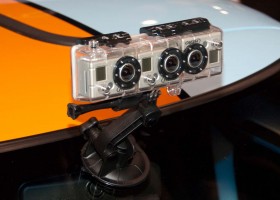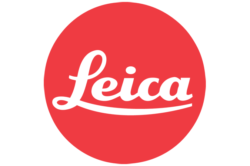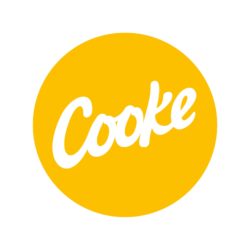 GoPro makes the famous HD HERO line of wearable and mountable cameras and accessories. The camera’s about the size an ice cube. It comes with a rugged waterproof plastic shell. At NAB 2011, they introduced a tiny on-board monitor and a 3D version.
GoPro makes the famous HD HERO line of wearable and mountable cameras and accessories. The camera’s about the size an ice cube. It comes with a rugged waterproof plastic shell. At NAB 2011, they introduced a tiny on-board monitor and a 3D version.
As GoPro says, “these cameras make it easy for people to record and share their lives’ most exciting moments in high definition. No more missed memories because the camera was stuffed in the backpack or left in the car. Wear your GoPro and get the shot that makes you look like a HERO.” You can now get GoPros in more than 50 countries and online at the official GoPro store. The cameras are not just for millions of highly caffeinated, adrenaline adventurers, many who post incredibly beautiful and exciting videos online. Mako Kowai regularly posts production stills from high-end jobs he’s working on that use GoPros as digital (sometimes expendable) crash and POV cameras. The quality is incredibly good for something so small and inexpensive.
Here’s an interview we did at NAB with Brad Schmidt, head of the Media Department at GoPro and Rick Loughery, Director of Communications at GoPro.
Q: How did GoPro get started?
BRAD SCHMIDT: I’ve been friends with Nick Woodman (the founder) for a long time and I’ve seen the camera go through a lot of different stages. What attracts people most about this camera, what attracted me the most about it, is that people have a personal relationship with this camera. It’s not a camera that fades in the background, where you’re an outsider. The camera is something that people are engaged with. It’s intimate, it’s close. It’s almost like a character or personality in and of itself. I think that’s what was totally different. It’s a camera that instead of shooting something else, it’s a camera that you can turn around and film yourself.
RICK LOUGHERY: And you were able to get your own perspective and share what you were seeing with everybody else.
Q: And, you enable people to customize it. Your customers have come up with crazy things that spin the camera around their head. And you include mounts and brackets with the camera, which nobody else did either, right?
RICK LOUGHERY: Yes. I think that’s the big thing. It’s so versatile, it can be used in so many different ways. The guys over at Deadliest Catch shared video with us where they’d mount it on a crab.
BRAD SCHMIDT: It shows what it’s like to be a crab coming out of a crab pot. It’s unbelievable.
RICK LOUGHERY: And it’s not a good experience, I don’t think.
Q: It’s better to be the fisherman.
RICK LOUGHERY: That’s the experience that Nick, the guy who started the company, saw: the ability to turn the camera around, back at yourself, to share what you were seeing, to make it a mountable, wearable camera. That is really what broke through. And then obviously, it had to be a high quality video. Because if it’s not high quality video and it doesn’t stand up, then it’s a non-starter.
Q: How did you figure out, in the beginning, the way make this? Because you also set a good price point.
RICK LOUGHERY: Nick started with a 35 millimeter film still camera that was worn on your wrist. And that grew into digital. It was through his own building and selling cameras. But the first cameras you wore on your wrist to take pictures of your buddy surfing.
BRAD SCHMIDT: It was almost like a Kodak disposable one, and we’d load up 35mm slide film into it. And the pictures came out great. And then the next generation was one that only recorded for ten seconds, and it looks kind of like old super 8. And that was only four, five years ago?
RICK LOUGHERY: Yeah. It was kind of late on the curve to digital, but it was the fact that you could put it on a surfboard, where you couldn’t do that with any other camera.
Q: Did you guys all grow up together?
RICK LOUGHERY: No, I just met Brad today. [Laughter] It’s really cool how the GoPro crew, the original guys, grew. The company began with Nick and basically it was either you were a family member or you went to college with Nick. Brad, you met on a boat?
BRAD SCHMIDT: A boat in Sumatra about eight or nine years ago. I traveled a lot and was a big photography sort of nut. Nick and I ended up on the same ferry going out to very remote islands off Sumatra called the Mentawais. Nobody was out there but the islanders and us—along with my brother and his girlfriend, now wife. It was a really quick bond that developed in a month or two of surfing.
We traveled a lot with him. And the whole time, I had a Cannon waterproof camera, one of their first ones. It was 35 millimeter. Nick had a disposable camera. We were always trying to take pictures of each other. One day he said, “I think I’m really going to go off and develop this thing when I get back home.” And I thought, like, “Yeah, good luck.”
Fast forward to today and it’s exploded. Nick was right. Even up to a year and a half ago, it was all family and friends. It was Justin, Director of Business Development, Nick’s best friend and roommate from University of California at Santa Diego…
Q: You’re not a family member?
RICK LOUGHERY: I’m not a family member. A really good friend of mine was Nick’s best man at his wedding, best friend growing up. I have always had GoPros, starting with the early film cameras and the digitals, and just kind of came in that way.
Q: Where’s the company headquartered?
RICK LOUGHERY: Half Moon Bay, California. Just south of San Francisco
Q: I’ve been there. Isn’t that where the big surf spot is? Mavericks?
RICK LOUGHERY: Absolutely. It’s a cool little town. With a happening night life, right?
BRAD SCHMIDT: Yeah, huge.
RICK LOUGHERY: Huge night life. [laughter]
Q: How do you manufacture GoPros?
BRAD SCHMIDT: There are factories overseas.
RICK LOUGHERY: We have warehouses here in the US. Distribution. Support. Marketing.
Q: Well, they are called Hero Cameras, and now you have a 3D version. Looks like GoPro Cameras are heroes at this year’s NAB 2011.
(photo by Dorian Weber)







